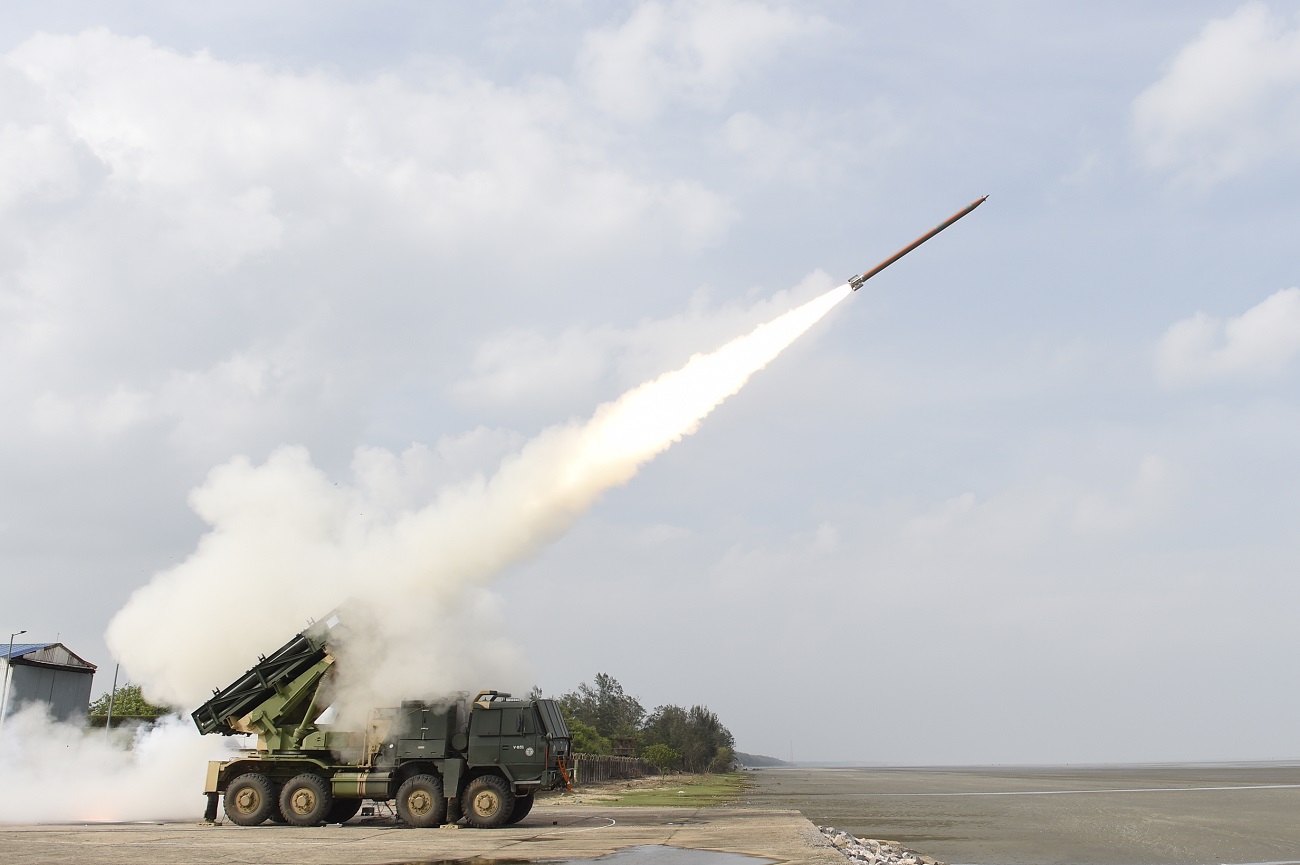The Indian Army has given the nod for the development of rockets to enhance the capabilities of its Pinaka Multi-Barrel Rocket Launchers (MBRLs). A source within Munitions India Limited (MIL), the state-owned rocket manufacturer, revealed that the Defence Research and Development Organisation’s (DRDO) subsidiary, Armament Research and Development Establishment (ARDE), has received official approval to spearhead the creation of two advanced rockets with striking ranges of 120 km and 300 km, respectively. The 120 km range rockets, sharing the same 214 mm caliber as existing Pinaka rockets, are set to undergo development under the watchful eye of ARDE, which is currently formulating a Preliminary Services Qualitative Requirement (PSQR). The PSQR delineates essential and desirable parameters for weapon system development, a crucial step in the Indian procurement process. While specifics on the development status of the 300 km range rocket remain undisclosed, this ambitious project marks a notable stride in India’s pursuit of advanced artillery capabilities.
Upon successful development, Munitions India Limited will undertake the responsibility of manufacturing these advanced rockets through a Transfer of Technology (ToT) agreement with the DRDO. This collaboration signifies a commitment to fostering indigenous defense capabilities and self-reliance in the production of cutting-edge weaponry. In November 2023, the Indian Ministry of Defence (MoD) greenlit the procurement of 6,400 rockets, valued at INR 28 billion (USD 337 million), specifically designed for the Pinaka MBRLs. These rockets, capable of neutralizing tanks and armored personnel carriers, underscore the military’s strategic focus on enhancing firepower and effectiveness in modern warfare scenarios.

The Pinaka MBRL, developed by the DRDO for the Indian Army, has already proven its mettle in the field. Originating from the Kargil War, where it successfully neutralized Pakistani positions on mountain tops, Pinaka has become a cornerstone of the Indian Army’s artillery arsenal. With a maximum range of 60 km for the enhanced Mark-I version, it can fire a salvo of 12 High Explosive (HE) rockets in a mere 44 seconds, showcasing its rapid deployment capabilities. A complete MBRL system, a Pinaka battery comprises six launcher vehicles, each equipped with 12 rockets, loader-replenishment vehicles, replenishment vehicles, Command Post vehicles with Fire Control computers, and the DIGICORA MET radar. Impressively, a battery of six launchers can effectively neutralize an area of 1,000 m × 800 m, showcasing the system’s formidable reach.
The Pinaka MBRL system’s flexibility further lies in its ability to fire all 72 rockets in a battery within 44 seconds, covering an expansive area of 1 km². With each launcher capable of firing in different directions and equipped with individual computers for autonomous functionality, the Pinaka MBRL system epitomizes modern artillery adaptability in diverse combat scenarios. As the Indian Army advances its artillery capabilities with the approval of advanced rockets for the Pinaka MBRLs, this development underscores the nation’s commitment to bolstering its defense infrastructure and maintaining a robust stance in the ever-evolving landscape of military technology.















